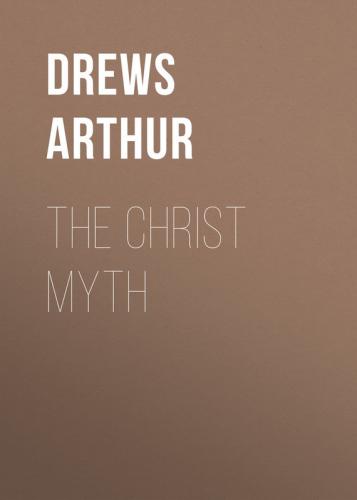We are compelled to suppose that in the case of all the Gods of this nature the idea of the dying away of vegetation during the heat of the year and its revival had become intertwined and commingled with that of the declining and reviving strength of the sun. Thus, from this mingling of two distinct lines of thought, we have to explain the variations of the double-natured character of the Sun-Gods and Vegetation-Gods of Western Asia.149 It is obvious, however, that the sun can only be regarded from such a tragic standpoint in a land where, and in the myths of a people for whom, it possesses in reality such a decisive significance that there are grounds for lamenting its absence or lack of strength during winter and for an anxious expectation of its return and revival.150 But it is chiefly in the highlands of Iran and the mountainous hinterland of Asia Minor that this is the case to such an extent as to make this idea one of the central points of religious belief. Even here it points back to a past time when the people concerned still had their dwelling-place along with the kindred Aryan tribes in a much more northerly locality.151 Thus Mithras, the “Sol invictus” of the Romans, struggling victoriously through night and darkness, is a Sun hero, who must have found his way into Persia from the north. This is shown, amongst other things, by his birthday being celebrated on the 25th of December, the day of the winter solstice. Again, the birth of the infant Dionysus, who was so closely related to the season Gods of Nearer Asia, used to be celebrated as the feast of the new birth of the sun at about the same time, the God being then honoured as Liknites, as “the infant in the cradle” (the winnowing-fan). The Egyptians celebrated the birth of Osiris on the 6th of January, on which occasion the priests produced the figure of an infant from the sanctuary, and showed it to the people as a picture of the new-born God.152 That the Phrygian Attis came thither with the Aryans who made their way from Thrace into Asia Minor, and must have had his home originally in Northern Europe, appears at once from the striking resemblance of the myth concerning him with that of the northern myth of Balder. There can be no doubt that the story in Herodotus of Atys, son of Crœsus, who while out boar hunting accidently met his death from the spear of his friend, only gives another version of the Attis myth. This story, however, so closely resembles that of the death of Balder, given in the Edda, that the theory of a connection between them is inevitably forced upon one’s mind. In the Edda the wife of Balder is called Nanna. But Nanna (i. e., “mother”) was according to Arnobius153 the name of the mother of the Phrygian Attis.
Now the Sun and Summer God Balder is only a form of Odin, the Father of Heaven, with summer attributes, and he too is said, like Attis, Adonis and Osiris, to have met his death through a wild boar. Just as anemones sprang from the blood of the slain Adonis and violets from that of Attis, so also the blood of the murdered Odin (Hackelbernd) is said to have been changed into spring flowers.154 At the great feast of Attis in March a post or pine-tree trunk decked with violets, on which the picture of the God was hung, used to form the central point of the rite. This was a reminder of the way in which in ancient times the human representative of the God passed from life to death, in order by sacrifice to revive exhausted nature. According to the verses of the Eddic Havamal, Odin says of himself: —
“I know that I hang on the wind-rocked tree
Throughout nine nights,
Wounded by the spear, dedicated to Odin,
I myself to myself.”155
By this self-sacrifice and the agonies which he endured, the northern God, too, obtained new strength and life. For on this occasion he not only discovered the Runes of magic power, the knowledge of which made him lord over nature, but he obtained possession at the same time of the poetic mead which gave him immortality and raised the Nature God to be a God of spiritual creative power and of civilisation. This is obviously the same idea as is again found in the cult of Attis and in the belief in the death of the God. The relationship of all these different views seems still more probable in that a sacrificial rite lay at the root of the Balder myth also. This myth is only, so to speak, the text of a religious drama which was performed every year for the benefit of dying nature – a drama in which a man representing the God was delivered over to death.156 As all this refers to the fate of a Sun God, who dies in winter to rise again in the spring, the same idea must have been associated originally with the worship of the Nearer Asiatic Gods of vegetation and fruitfulness, and this idea was only altered under changed climatic conditions into that of the death and resurrection of the plant world, without, however, losing in its new form its original connection with the sun and winter.
Конец ознакомительного фрагмента.
Текст предоставлен ООО «ЛитРес».
Прочитайте эту книгу целиком, купив полную легальную версию на ЛитРес.
Безопасно оплатить книгу можно банковской картой Visa, MasterCard, Maestro, со счета мобильного телефона, с платежного терминала, в салоне МТС или Связной, через PayPal, WebMoney, Яндекс.Деньги, QIWI Кошелек, бонусными картами или другим удобным Вам способом.
